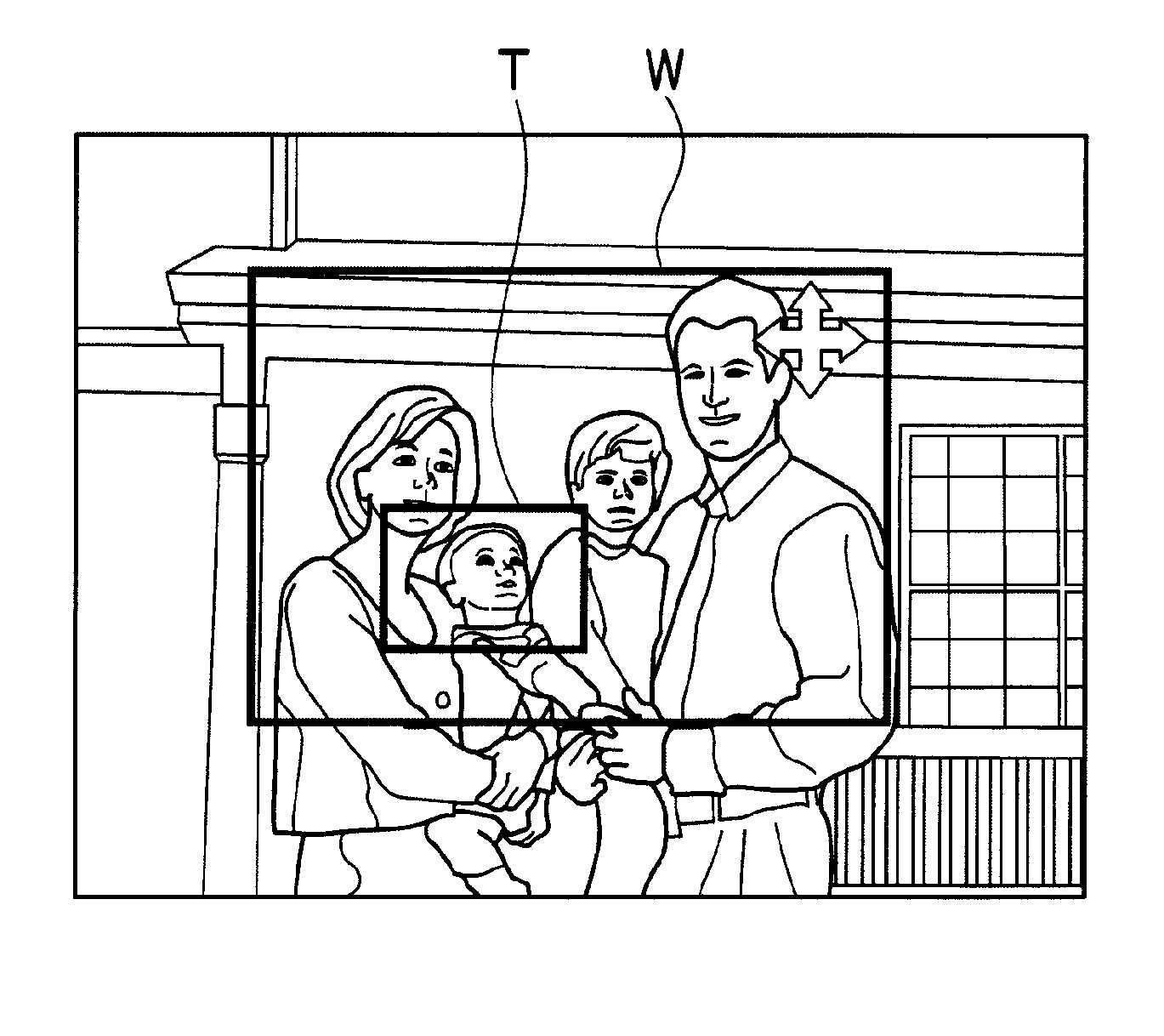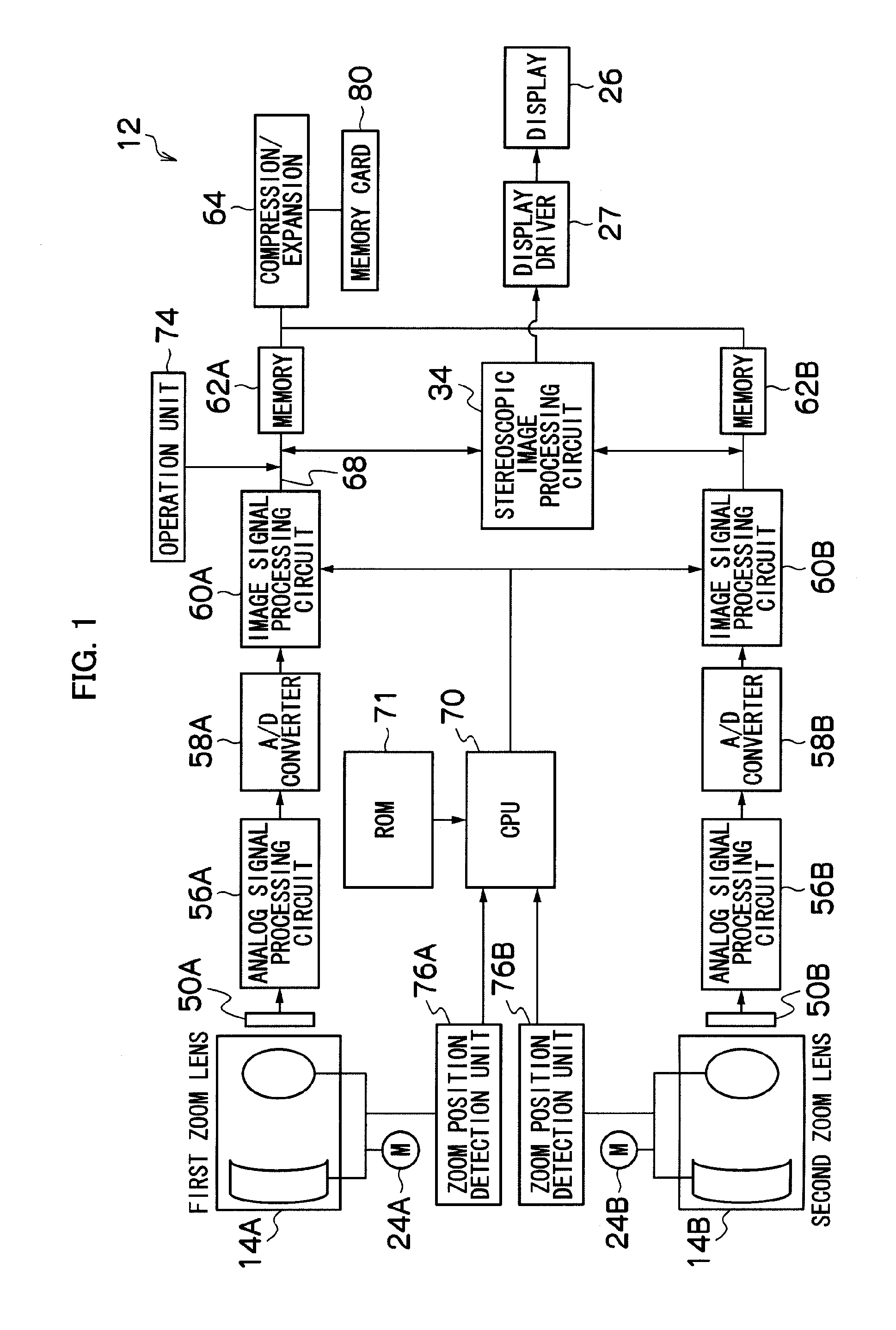Imaging device and method
a technology of a wide-angle image and a camera is applied in the field of wide-angle image, which can solve problems such as difficulty in taking a wide-angle imag
- Summary
- Abstract
- Description
- Claims
- Application Information
AI Technical Summary
Benefits of technology
Problems solved by technology
Method used
Image
Examples
first embodiment
[0045]FIG. 1 illustrates an electrical configuration of a camera according to a preferred embodiment of the present invention.
[0046]Each of imaging optical systems 14A and 14B includes a zoom lens, a focus lens, an aperture and the like. It is assumed that a convergence angle between optical axes of the imaging optical systems 14A and 14B is mechanically fixed. It should be noted that three or more imaging optical systems may exist.
[0047]In response to an operation on a zoom button of an operation unit 74, lens motors 24A and 24B move the zoom lenses of the imaging optical systems 14A and 14B, along lens optical axes, to a tele side (extension side) / wide side (collapsing side), and change focal lengths (image-taking magnifications).
[0048]Although not illustrated, in an AE (Auto Exposure) operation, iris motors vary aperture values of the respective apertures of the imaging optical systems 14A and 14B so as to limit light fluxes, and thereby perform exposure adjustment. Moreover, in ...
second embodiment
[0103]In S3 and S4 of the first embodiment, compositions of the trimming wide-image and the tele-image can be easily confirmed as follows.
[0104]FIG. 7 illustrates a flowchart of a main section of the image taking process according to a second embodiment. This process can be substituted for S3 and S4 of the first embodiment.
[0105]In S11, the CPU 70 determines whether or not the release switch of the operation unit 74 has been half-pressed. If Yes, the process proceeds to S12, and if No, this determination is repeated.
[0106]In S12, the CPU 70 enlarges an area of the trimming wide-image included in the wide-side frame W so that the area occupies the entire display 26, and displays the area on the display 26. The CPU 70 also enlarges and displays the tele-side frame T at the same display enlargement magnification as that for the wide-side frame W.
[0107]FIGS. 8A and 8B illustrate an example of the wide-side frame W and the tele-side frame T displayed in S12. FIG. 8A illustrates the displ...
third embodiment
[0111]FIG. 9 illustrates a flowchart of the main section of the image taking process according to a third embodiment.
[0112]S21 to S23 are similar to S11 to S13 of the second embodiment.
[0113]In S24, the trimming wide-image and the tele-image are obtained similarly to S14. Subsequently, the CPU 70 switches the display on the display 26 from the trimming wide-image to the tele-image.
[0114]In other words, as illustrated in FIG. 10, the default wide-image (FIG. 10A) is displayed when the image taking process is started (S2), the trimming wide-image (FIG. 10B) is displayed when the release switch is half-pressed (S21), and the tele-image (FIG. 10C) is displayed when the release switch is fully pressed (S24), sequentially.
[0115]In other words, a limit range of wide-angle image taking with the default wide-image, an image-taking range of the trimming wide-image, and an image-taking range of the tele-image can be easily confirmed.
PUM
 Login to View More
Login to View More Abstract
Description
Claims
Application Information
 Login to View More
Login to View More - R&D
- Intellectual Property
- Life Sciences
- Materials
- Tech Scout
- Unparalleled Data Quality
- Higher Quality Content
- 60% Fewer Hallucinations
Browse by: Latest US Patents, China's latest patents, Technical Efficacy Thesaurus, Application Domain, Technology Topic, Popular Technical Reports.
© 2025 PatSnap. All rights reserved.Legal|Privacy policy|Modern Slavery Act Transparency Statement|Sitemap|About US| Contact US: help@patsnap.com



